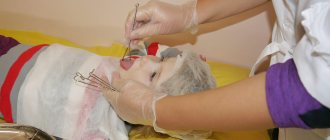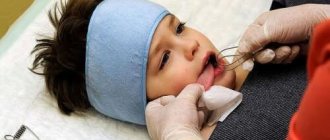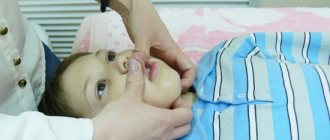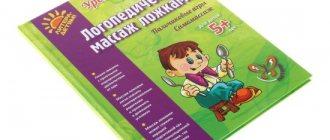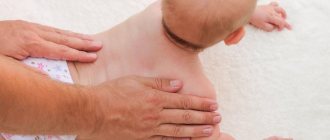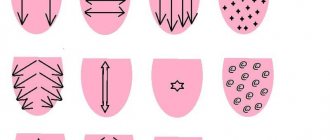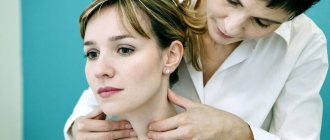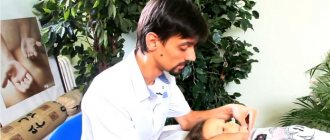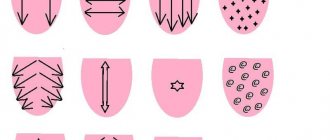Calculate the cost of training
By submitting your data, you agree to the Privacy Policy
Issued document:
Probe massage is a type of speech therapy massage for the purpose of correcting speech disorders. Probes are special devices that are used in speech therapy to form the correct pronunciation of sounds and speech breathing, normalize the muscle tone of the speech apparatus and remove vocal clamps. With the help of probes, the speech therapist changes the articulatory position or performs a massage - this is a long process that includes several sessions and requires patience and a high level of responsibility from the specialist. Probe massage allows speech therapists to correct a wide range of speech disorders
(motor alalia, stuttering, problems with salivation and swallowing, etc.) mainly in children, but can be effective for adolescents and adults.
During the advanced training course, speech therapists study the types of probes and the technique of their use for speech correction
. The training is aimed at specialists with probing massage skills who need to systematize and expand their knowledge. The program examines successful and unsuccessful examples of correction of speech disorders of varying complexity, which will allow a specialist to avoid mistakes and obtain the required result, based on practical experience. Training is carried out remotely, without practical classes.
Who will benefit from the courses?
Speech therapy massage allows you to correct pronunciation, relax, and strengthen the tone of your speech muscles. Problems with pronunciation and bite are more common in young children than in adults. Therefore, the course will be useful to parents whose children suffer from speech impediments.
Courses, seminars, trainings, master classes on speech therapy massage are developed for speech therapists, defectologists, students of the defectology faculty, massage therapists, and highly specialized specialists working with children.
What is taught in the courses
The program is divided into theoretical and practical parts. The theory covers the following topics:
- the significance of the procedure in correctional pedagogical influence;
- specifics of the work of a speech therapist in conducting massage;
- logomassage from the point of view of physiological action;
- compiling a massage course based on diagnostic data;
- functions of the oral-facial muscles in speech;
- procedure technique based on diagnostic results;
- the use of a specific type of procedure depending on the speech defect;
- indications, contraindications.
Practical classes involve correct hand placement, learning the skills of massage movements, and practical acquaintance with various speech therapy massage techniques. In practice, massage complexes are designed to treat a specific speech defect: stuttering, malocclusion, etc.
How is speech therapy massage performed?
This method of speech therapy work is quite effective, but should be performed exclusively by a specialist with certain skills and education. For parents, we offer information on how speech therapy massage should be carried out:
- The appointment should occur only after the examination has been completed.
- Massage is carried out in courses - 10 or 20 sessions. The milder the speech disorder, the shorter the duration of the course and the sessions themselves may be.
- As a rule, sessions are scheduled 2 times a week or more often and are included in speech therapy classes.
- Depending on the type of massage, the child will be asked to either sit in a chair or lie down on a massage table. Often children are not ready to lie down immediately for a massage. A good specialist will not put pressure on the child, but will give him the opportunity to get used to it gradually.
- Manipulations should not be painful.
- The duration of the session again depends on the type of speech disorder and the child’s condition. However, the first session, as a rule, lasts only a few minutes and during this time only general relaxing strokes are used. This is done so that the child gets used to the procedure and does not feel fear.
- If the child is worried, at first the speech therapist may suggest that he sit on a chair or on his parents' lap during the procedure.
Parents must understand that speech therapy massage is not a panacea. If your child undergoes this procedure, you should not relax and assume that the problem is solved. Massage is only a piece of the overall puzzle that makes up correctional work. To achieve results, it must be combined with special speech therapy classes and home assignments.
Date of publication: 08/13/2016. Last modified: 01/29/2021.
How and where you can apply the acquired knowledge
The basic certificate program allows you to apply practical skills immediately upon completion of training. Beginners can try their hand at opening a speech therapy center or working as a medical worker. The knowledge will be useful to employees of preschool institutions and schools.
The program will help experienced speech therapists and speech pathologists improve their skills and apply new techniques and technologies in practice. For specialists with medical and pedagogical education, the course will expand their scope of work.
Requirements for students:
1.
Secondary general education.
2.
Copies of documents required for completing training and issuing a certificate of advanced training:
- Documents on education and qualifications;
- Previous specialist certificate (if any);
- Document on advanced training (if any);
- A copy of the work record;
- Copy of the passport;
- A document confirming the change of surname, if it has changed.
All courses “ CME for medical personnel with secondary education ”
Reviews
Maria, 25
The child had trouble pronouncing some letters of the alphabet. I decided to take a short online speech therapy massage course on my own. The program was at a promotional price, so it was inexpensive. Having saved money on a specialist, I myself was able to correct the child’s speech with the help of exercises and massage procedures. Now he speaks clearly and pronounces words correctly.
Vyacheslav, 36
I have been working as a speech therapist for more than 10 years. To improve professional skills and update existing knowledge about techniques, I enrolled in speech therapy massage courses. The group training program helped me obtain an additional certificate, improve my qualifications, and find useful contacts in my field.
Oksana, 28
I have a medical education as a speech therapist. In the process of work, it was necessary to learn speech therapy massage to attract clients to the children's center. Under the strict guidance of an experienced teacher, I completed the full program. Now I enjoy doing massage treatments and helping children with speech impediments.
Probes used for massage
One of the most common and effective massage techniques is probe massage according to Novikova. In the process, special tools are used that have a long handle and a steel nozzle at the end. The latter is presented in different forms, each of which is capable of using a specific affected area of the cheeks, soft palate, lips, and tongue.
The course of treatment lasts 2-3 weeks, the frequency of repetition is no more than forty-five days. Each exercise must be repeated 30 to 35 times. In simple cases, just one course is enough to eliminate speech defects.
Before the start of the first course, the child is told how it will be conducted. He is allowed to hold the probes in his hands and take a good look at them in order to eliminate fears or hostility.
| Probe type | Features of application |
| thymus | The nozzle has a pointed end that allows you to prick the cheeks, soft palate, lips, and tongue, which are necessary to stimulate the contraction of their muscles. As the child gets used to it, the speech therapist adds light rocking and rotation in one place for 5 seconds to the fast, rhythmic movements. |
| "Eight" | It has a nozzle in the shape of the number “8”, designed to warm up the labial and cheek muscles, point pressure on the tongue with light rocking. |
| "Sleigh" | Three probes have a sleigh-shaped attachment, but differ in size: small, large and medium. The size determines the grip area and the pressure applied. Purpose: stimulation of the muscles of the tongue, lips, soft palate, cheeks. |
| "Hatchet" | Provides restoration of the tone of the labial and tongue muscles, affects the muscles of the cheekbones by pressing into them and passing through a sliding movement. Such effects allow you to restore their normal tone and mobility. |
| Cross | Allows you to influence the tongue by pressing on it with a cross. Stimulation of the tongue muscles is carried out by pressing and pushing back. |
| Pusher | Use at the end of the massage by pressing on the tongue for five seconds and relaxing. |
Advantages and disadvantages
Logomassage will be an excellent solution to the problem of a child’s speech development. There are several advantages of the procedure:
- improvement of vascular function;
- increasing muscle elasticity;
- availability of the technique;
- painless event;
- performed at home or in a medical center at your convenience;
- lack of medications to treat the defect.
Among the disadvantages, only possible inconvenience for the child when performing logomassage is noted. But this minus is individual and rare.
Indications for speech therapy massage
The procedure cannot be prescribed independently. An examination of the speech muscles by a specialist is first required. According to the diagnostic results, a specific speech defect is established.
Logomassage is intended for children suffering from speech disorders , especially in cases where regular sessions with a speech therapist are unsuccessful.
Indications for the procedure:
- unclear pronunciation of sounds;
- stuttering;
- voice disorder;
- delayed speech development;
- violation of the tone of the facial muscles;
- tension during pronunciation.
The results of the procedures are improved speech breathing, increased voice strength, formation of a correct bite, and elimination of deficiencies in pronunciation. Speech therapy massage has a beneficial effect on all facial muscles, nerve endings, and blood vessels.
Studying programs
MASPC (ANO DPO "Interregional Academy of Construction and Industrial Complex") conducts training for speech therapists according to the following programs:
- “Probe massage. Non-traditional methods of speech therapy correction of speech disorders of varying complexity" (240 hours);
- “Speech therapy and probe massage for children and adults” (72 hours).
The courses are aimed at developing a theoretical basis for speech therapists with specialized education, so those wishing to undergo training must provide supporting documents. The Academy operates on the basis of license No. 040564 dated January 16, 2021.
Types of speech therapy massage
Among the types of treatment and prophylactic procedures are:
- traditional;
- point;
- hardware;
- probe;
- Dyakova method;
- self-massage.
The traditional method involves rubbing and stroking movements. To relax the facial muscles, you need to lightly stroke certain facial areas. Intense patting movements are required to tone them.
The acupressure method has a relaxing effect, stimulating biologically active points with an accumulation of nerve endings.
The hardware technique is used using special instruments.
Probe massage is intended for children with impaired speech motor skills. The probes massage the roof of the mouth, tongue and lips in the mouth.
Dyakova’s method is described in detail in her book “Speech Therapy Massage”. Where the essence of complex diagnostic methods and procedures is described in detail.
Self-massage is a set of exercises and movements for training the facial muscles.
Features of speech therapy tongue massage
The technique of this type of massage involves its use as part of complex treatment, along with the correction of speech disorders. Only this approach allows you to achieve the desired results in full. The selection of equipment is carried out on an individual basis, taking into account such parameters as:
- condition of the muscles of facial expressions, articulation;
- general motor skills;
- manual motor skills;
- presence of asymmetry.
During the procedures, the speech therapist tells the child’s parents about what actions need to be performed and what impact they will have on speech. The results are consolidated at home. It should be done no more than every other day: if you do it every day, irritation of the tongue receptors may develop.
The course is carried out in several cycles of ten sessions each. The break between cycles can be from 30 to 60 days. Longer pauses are also allowed, but in this case you will have to increase the number of sessions.
The duration of the first sessions should not exceed five minutes, but gradually increase it. If a child has serious problems, the first massages should not last more than two minutes in order to eliminate his negative attitude towards the procedure.
Contraindications
There are a number of contraindications for which massage is strictly prohibited:
- herpes;
- conjunctivitis;
- stomatitis;
- skin diseases;
- oncology;
- enlarged lymph nodes;
- thrombosis;
- furunculosis;
- skin fungus;
- acute respiratory infections;
- convulsions;
- excessive sensitivity.
Carrying out speech therapy massage if the patient has these diseases can lead to a deterioration in the health of the client or massage therapist.
